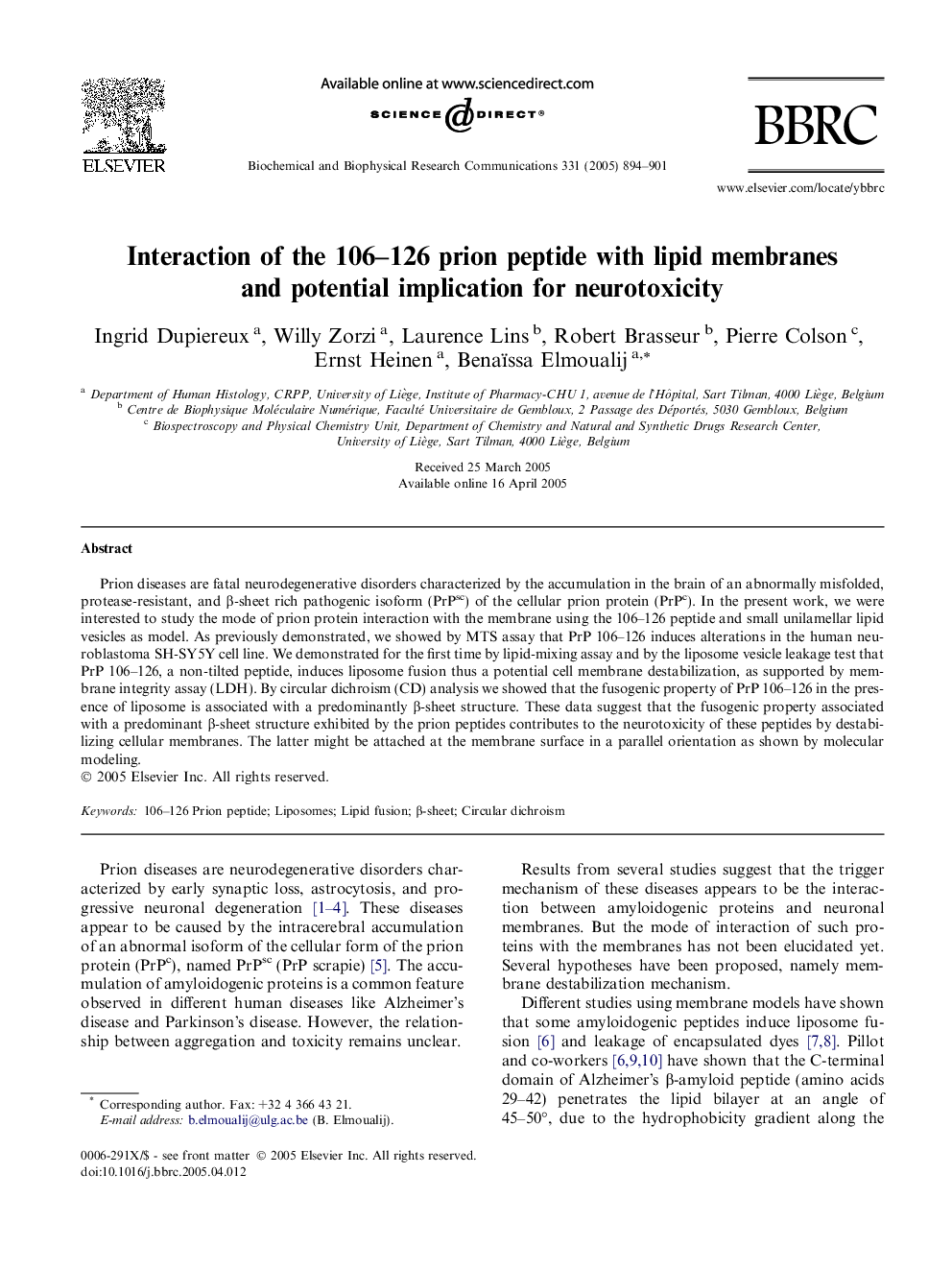| Article ID | Journal | Published Year | Pages | File Type |
|---|---|---|---|---|
| 10770342 | Biochemical and Biophysical Research Communications | 2005 | 8 Pages |
Abstract
Prion diseases are fatal neurodegenerative disorders characterized by the accumulation in the brain of an abnormally misfolded, protease-resistant, and β-sheet rich pathogenic isoform (PrPsc) of the cellular prion protein (PrPc). In the present work, we were interested to study the mode of prion protein interaction with the membrane using the 106-126 peptide and small unilamellar lipid vesicles as model. As previously demonstrated, we showed by MTS assay that PrP 106-126 induces alterations in the human neuroblastoma SH-SY5Y cell line. We demonstrated for the first time by lipid-mixing assay and by the liposome vesicle leakage test that PrP 106-126, a non-tilted peptide, induces liposome fusion thus a potential cell membrane destabilization, as supported by membrane integrity assay (LDH). By circular dichroism (CD) analysis we showed that the fusogenic property of PrP 106-126 in the presence of liposome is associated with a predominantly β-sheet structure. These data suggest that the fusogenic property associated with a predominant β-sheet structure exhibited by the prion peptides contributes to the neurotoxicity of these peptides by destabilizing cellular membranes. The latter might be attached at the membrane surface in a parallel orientation as shown by molecular modeling.
Keywords
Related Topics
Life Sciences
Biochemistry, Genetics and Molecular Biology
Biochemistry
Authors
Ingrid Dupiereux, Willy Zorzi, Laurence Lins, Robert Brasseur, Pierre Colson, Ernst Heinen, Benaïssa Elmoualij,
